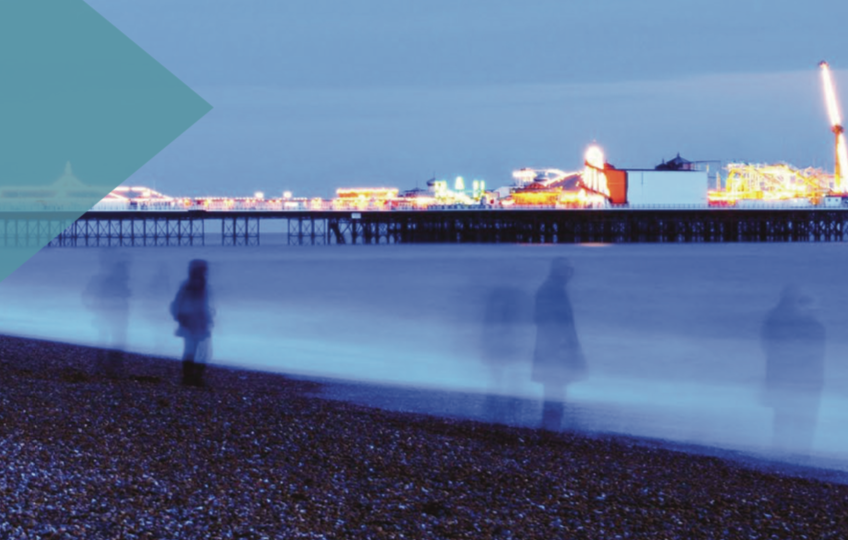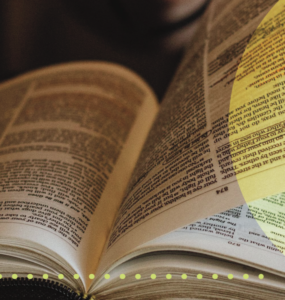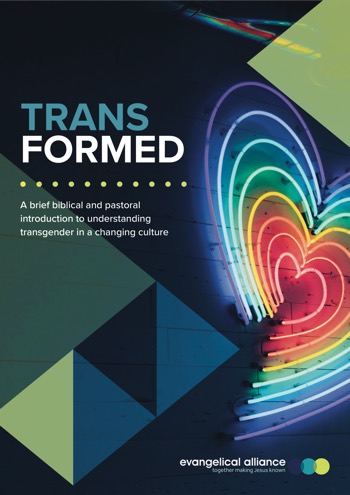This is the fourth of six posts on the Evangelical Alliance’s Transformed report. See the first, second, and third.

Confused Bodies
On the next couple of pages, still within its treatment of the biblical ‘big story’, the report moves on to talk about bodies (pp. 11–12). The authors’ positive argument is that what we think and say about gender should rest on what we know about bodies – and, in particular, on what they say is the clear biological differentiation of bodies into male and female. ‘Throughout the Bible’, they say, ‘biological sex is binary and integral to personhood – biological sex should reveal and determine gender’ (p. 11). Their negative argument is that transgender thinking rejects this proper ordering, and that it does so because it is not serious about bodies – believing that ideas or feelings are more important than bodies, and that our bodies can be remade to fit them.
Gnosticism?
Let’s begin with that last claim. Trans thinking involves, according to this report, a form of dualism: a downplaying of bodies and matter in favour of ideas and the ‘inner self’. In fact, the report labels trans thinking a form of ‘Gnosticism’ (p. 12), tying it to a range of movements from the early church that were ultimately declared heretical by catholic Christianity. Now, I have been trying hard (whatever my level of success) not to be dismissive in my critique of the report, but this accusation of Gnosticism in itself is nonsense. Even if the report’s analysis of trans thinking were correct, there would still be only a vague similarity, and no significant historical connection, between that thinking and one aspect of Gnosticism. The comparison is, to be fair, not their invention; I’ve heard it said in a number of other contexts – but it is in the end a nasty little bit of historical name-calling, which enables people in this debate implicitly to label those they disagree with as heretics, and it has no credible historical or conceptual basis behind it.
Look past this silliness, however, and there is a very serious point being made: we need, the report is insisting, to avoid a dualism in which bodies are devalued.
The first problem with this analysis should be obvious to anyone who has spent time reading in the area. One of the most obvious characteristics of the theological literature in which one is most likely to find arguments supportive of transgender people – including theological discussions of queer theory – is a rich and pervasive concern with bodies. Bodies in all their complex, messy, and glorious biological reality are taken with an attentive seriousness that has rarely been so prominent in the Christian tradition. It is just plain odd to think that this is a context in which the body is regarded as unimportant.
There is, however, a much deeper problem. In order to make their accusation stick to its target, the report’s authors themselves need to adopt a dualism of just the kind they deplore. That is, they need implicitly to deny that the deep-seated patterns of feeling and experience involved in gender dysphoria are themselves bodily. Their accusation works by drawing a sharp dividing line between these patterns of feeling or experience on the one side, and the biological reality of the body on the other. They want to claim that trans thinking devalues the latter (the body) for the sake of the former (the feelings and ideas). They want to claim that true Christian thinking allows the former (the feelings and ideas) to be determined by the latter (the body). In other words, in order to work at all, the report’s authors need to make dualistic assumptions: assumptions that divide mind from body.
What if, alternatively, one thinks of transgender people’s deep patterns of feeling and experience – patterns such as gender dysphoria – as bodily realities? What if these patterns of experience and feeling are rooted in a person’s body: in (to put it colloquially) the way their brains are wired, in facts about their bodies that could be traced with various forms of medical scanning and chemical testing? What if, more generally and less reductively, we recognised that our deepest patterns of self-perception and the intractable shapes of our affections happen in our bodies by means of our bodies? The question faced by a person experiencing dysphoria would not then be ‘Can I remake my body in the light of my ideas?’ but perhaps ‘How am I to respond to a body divided against itself?’[1]
‘Biological sex is binary’?
The report’s argument in this sub-section can only get going because it assumes the very dualism that it seeks to deny. That realisation might drive us back to look at other aspects of this stretch of the report. The report confidently tells us, for instance, that ‘Throughout the Bible, biological sex is binary’ (p.11). In the previous post, I pointed out that the report itself shows us that this isn’t quite true, presenting Jesus himself as ‘making space in our thinking for people and situations which do not fit neatly into that pattern’. But I want to think about a different problem with this claim now.
The biblical texts that the report cites speak about God creating men and women, and the authors note that the Bible speaks persistently about men and women from then on. But in order to summarise the import of this, the report makes some decidedly non-biblical distinctions: the Bible is telling us, they say, that ‘biological sex is binary and integral to personhood – biological sex should reveal and determine gender’. Now, the Bible doesn’t distinguish ‘sex’ and ‘gender’; it doesn’t speak about biology, or explain what biological features constitute femaleness or maleness. It simply talks, quite straightforwardly, about men and women. We, however, now make distinctions that Biblical authors did not make. We distinguish gender and biological sex (as the report notes), but we also distinguish a whole range of things that are involved in biological sex. We speak about chromosomes; we speak about genitalia; we speak about hormones; we speak about brain connections and chemistry – and so on, and on. And, as the report’s authors know, these things don’t always line up neatly. (The fact that they don’t always line up neatly is one of the things you can discover if you pay serious attention to real human bodies, in all their messy diversity.) We are coming back to talk about intersex in just a moment, but suffice it to say for now that the report acknowledges the plain fact that, for some people’s bodies, speaking about ‘biological sex’ gets very multi-layered and complex.
If, at the report’s own insistence, we refuse dualism – and if we therefore refuse the report’s own dualism that would separate from the body the patterns of feeling and self-apprehension involved in dysphoria or other kinds of trans experience – we simply add more layers of complexity to this picture of the body. The various different components and layers that go into what we think of as biological sex and gender simply don’t always match up, and that is a fact about bodies. Gender transition involving hormones or surgery would, if we thought this way, not look like a form of dualism (still less of ‘Gnosticism’); it would be a change made to the body in order to respond to a bodily situation.[2]
Intersex
It is worth drawing in at this point, by way of contrast, what is said later in the report about intersex people. These are people who are born with bodies that are not unambiguously either male or female, but that have some characteristics of both, or that fit neither category. There are many kinds of intersex condition, which can involve chromosomes, genitalia, hormone balances, brain structure – any number of different aspects of bodily life. And intersex people experience and respond to those conditions in a wide variety of ways.
Look at how the report suggests that we respond. ‘Doctors, in conjunction with the parents, often make a decision as to the most likely or best sex for the child to be raised, but the circumstances are often complex and painful for the individuals concerned. Surgical intervention is kept to a minimum at a young age, though there may need to be corrective surgery as the person matures’ (p. 19).
Here, then, when a person’s body does not fit neatly into the male–female pattern, the report’s authors are willing that the body should be changed by surgical interventions, even at a young age (and perhaps with the decisions made by doctors and parents, rather than the young person themselves). An such intervention might be undertaken not, it appears, simply in order to deal with medical problems that might arise from someone’s intersex condition; it can be undertaken in order to fit the intersex person into ‘the most likely or best sex’ for them – i.e., in order to make sure they are fitted into either the category ‘male’ or the category ‘female’. The report’s authors seem to want those intersex people’s bodies to be assimilated as much as possible, and by surgery if necessary, to what they believe is the biblical ‘big picture’.
The authors acknowledge that this can be a complex matter. The main aim of the brief section devoted to intersex people, however, seems to be to minimise any challenge that intersex conditions might present to the ‘big picture’ of male–female existence. Don’t worry, we are told, intersex conditions only affect a ‘tiny proportion of the population’ (p. 18) – and don’t worry, most of these exceptions can be pushed back into the normal pattern by wise professionals and caring parents. There is no real acknowledgment of the many intersex conditions that can’t be treated in this kind of way, no mention of the differences between those intersex people who would want if possible to be assimilated to typical gender patterns and those who would not, and no mention of the bad outcomes that we know can follow form the kind of decision and medical intervention described – and specifically by the desire to identify ‘the most likely or best sex’ in too wide a range of cases.
Here, it seems, the authors of the report are perfectly content to see bodies being altered to conform to a pre-determined set of ideas. Real bodies, it seems, only matter when they look like the authors of this report think they ought to look.
Footnotes
[1] I’m treading gingerly at this point. I am both wary of the kind of analysis that would reduce what we are talking about to the level of, say, brain chemistry, and that might push us to adopt too exclusively a medical framing for the whole discussion. On the other hand, I’m aware of some scientific work suggesting that the brains of transgender people do tend to differ from those of cisgender people, and resemble those of the gender with which they identify. I don’t have the competence to evaluate those scientific discussions, but it is at least worth asking the ‘what if’ question: what happens to dualistic arguments of the kind made in this report if such claims turn out to be correct?
[2] The report at one point in this section says that ‘God does not rescue us from suffering but redeems us through it. In the new heavens and the new earth we will enjoy the restoration of our bodies and minds’ (p. 10, emphasis removed). This is clumsily phrased. Taken at face value, the first sentence seems not only wrong but horrific. Jesus, faced with people whose bodies needed healing, did not say ‘Sorry; God does not rescue you from suffering but redeems you through it. You’ll get better in heaven!’ However, I think the authors are talking about situations in which we have desires that don’t align with God’s will: we might have the capacity to act on those desires, but obedience to God will lead us to refrain, even though the frustration of those desires might cause us suffering. Barring a miraculous changing of our desires by God, we simply have to endure the associated suffering as part of our discipleship – one of the ways in which we ‘work out our salvation’ in a fallen situation. (I’m pretty sure that, even so, we should not say that we would be redeemed through such suffering; but let’s be charitable and say that the authors were speaking very loosely at that point). This in itself does not add anything to the report’s case against gender transitioning: it simply says that the bare fact that refusing to transition might cause some suffering doesn’t necessarily make transitioning right.
This is the fourth of six posts critiquing this report.
1. Whose stories?
2. The varieties of trans experience?
3. Listening to the Bible
4. Confused bodies
5. The rest of the report
6. Conclusion



Recent Comments